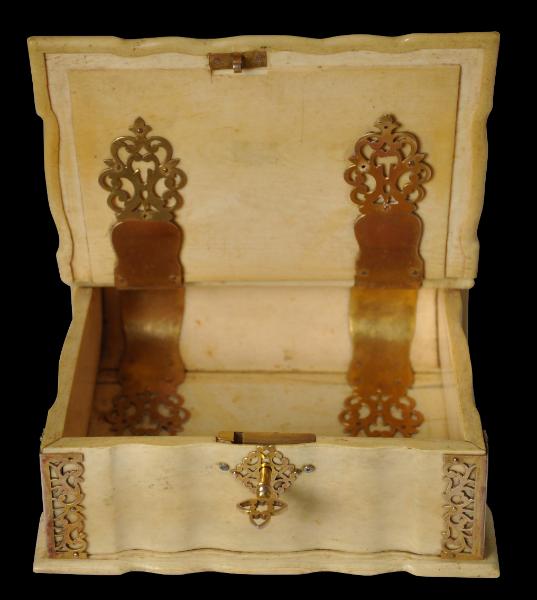
Dutch Colonial Ivory & Gold Bible Box
Rare Ivory Bible Box with Gold Mounts
Dutch Colonial Sri Lanka or Batavia
18th century
height: 4.7cm,
length: 12.5cm, weight: 322g
Dutch colonial bible boxes in any material are rare but an example in ivory with gold mounts is extremely rare. This example, which is in essentially perfect condition, follows the conventional form of having a hinged lid and is thicker at the front than at the back to emulate a leather-bound book. The top is beautifully carved with vegetal motifs commonly found on carved ebony in Sri Lanka, but also is similar to some of the carving undertaken in eighteenth century Batavia. The ‘spine’ of the box is gadrooned and this is repeated on top lid. The sides and front are gently crenulated or scalloped.
The front corners are edged with solid gold fretwork borders. This is mirrored in the elegant, diamond-shaped key-plate. The key itself is a work of art and is cast in solid gold. The original lock is tis present and working.
Inside, the lid is supported by elaborate hinge straps. These too are pierced. Tchakaloff (1998, p. 130) illustrated a cabinet attributed to possibly South India and to the eighteenth century which has very similar pierced metal fittings as the box here.
The base is attached with ivory pins. Elsewhere small gold pins have been used.
Dutch colonial bible boxes are relatively few. Veenendaal (1985, p. 86) illustrates two examples, one of which also is illustrated in Voskuil-Groenewegen (1998, p. 92).
There are few surviving examples of betel boxes that used a combination of ivory with gold or silver mounts. Tchakaloff (1998, p. 116) illustrates an ivory betel box with silver mounts attributed to the second half of the eighteenth century Dutch East Indies. The same box is illustrated in Veenendaal (1985, p. 88).
Bible boxes were used to hold a small personal bible. The wives of Dutch officials would walk in public in the Dutch settlements of south India, Sri Lanka and the East Indies followed by slaves or servants who held aloft umbrellas, carried betel boxes and perhaps a spittoon. Sometimes such a procession included a servant or slave who carried a bible box such as the example here.
References
Tchakaloff, T.N. et al, La Route des Indes – Les Indes et L’Europe: Echanges Artistiques et Heritage Commun 1650-1850, Somagy Editions d’Art, 1998.
Veenendaal, J.,
Furniture from Indonesia, Sri Lanka and India During the Dutch Period, Foundation Volkenkundig Museum Nusantara, 1985.
Voskuil-Groenewegen, S.M.
et al, Zilver uit de tijd van de Verenigde Oostindische Compagnie, Waanders Uitgevers, 1998.
Provenance
UK art market
Inventory no.: 2321
SOLD

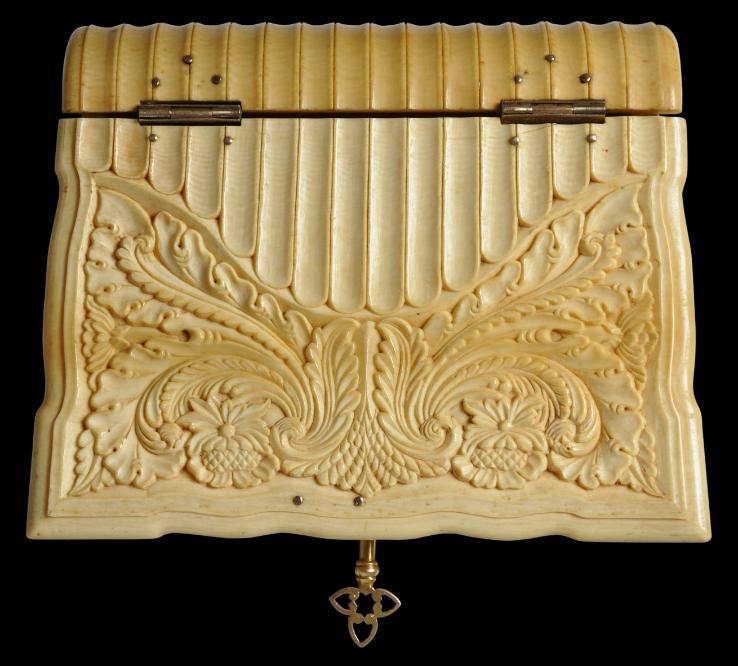
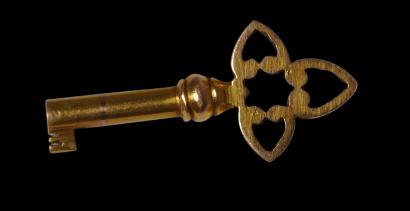
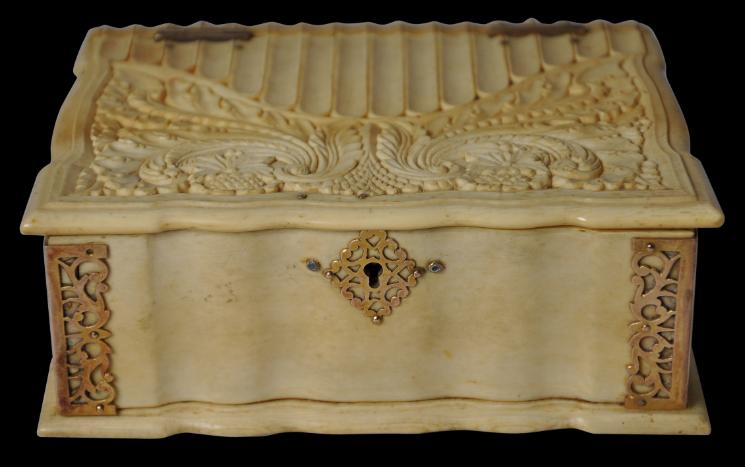
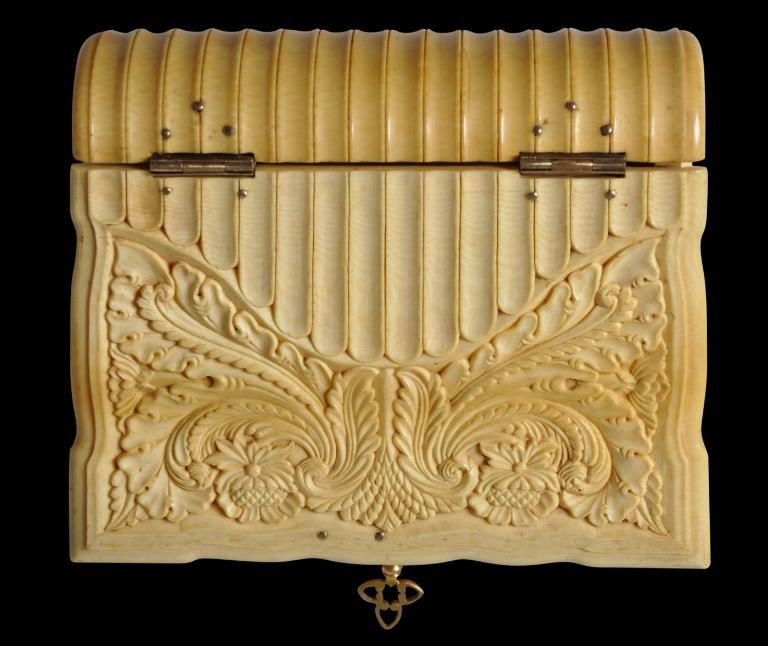
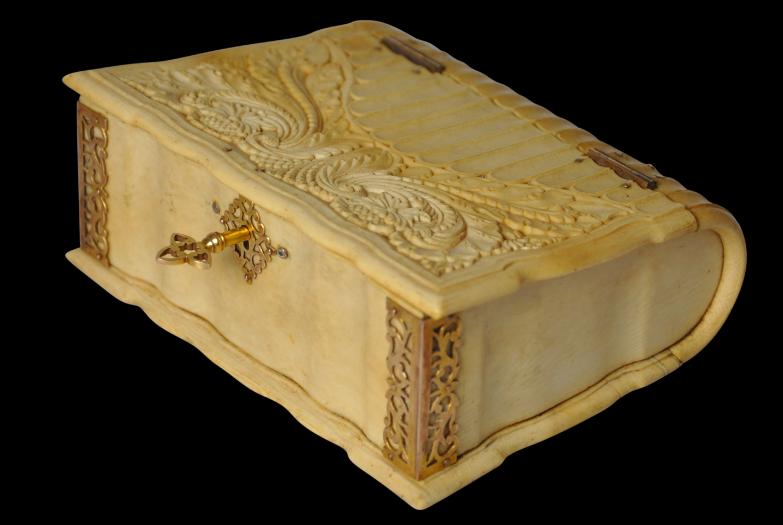
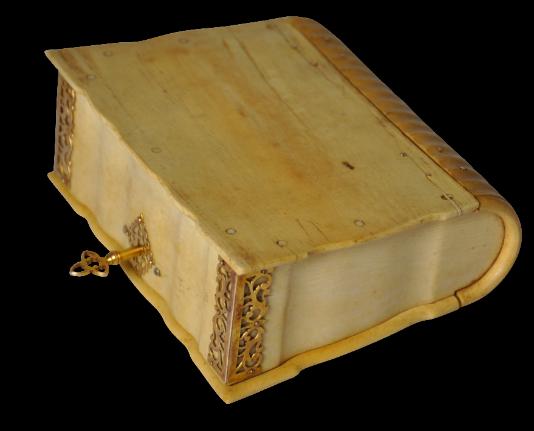
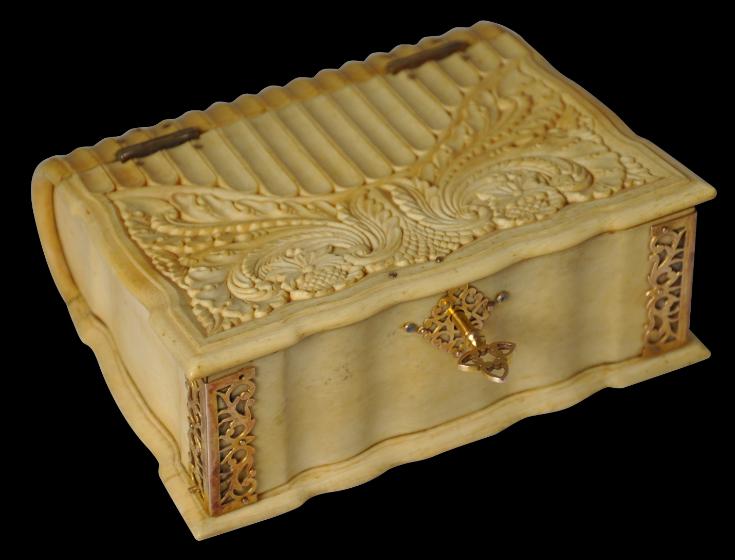
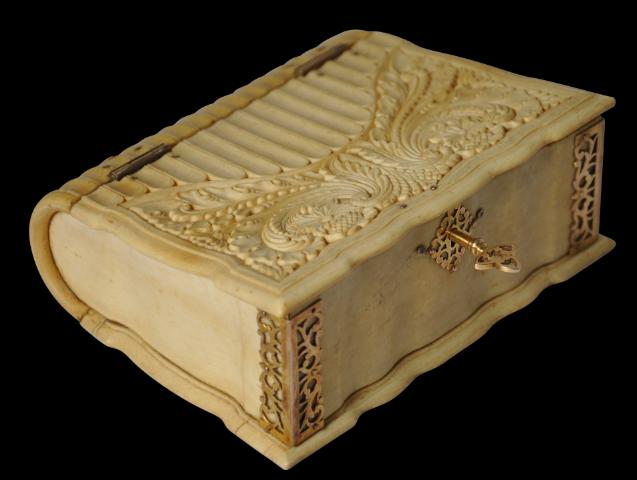
The ivory base of the box.

